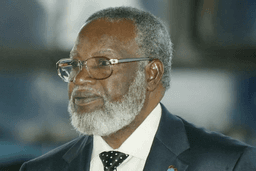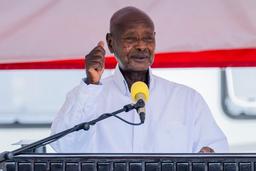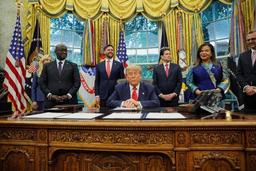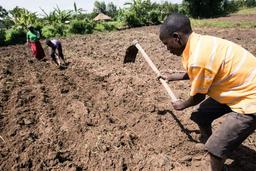Morocco
North African country bordering the Atlantic Ocean and Mediterranean Sea, is distinguished by its Berber, Arabian and European cultural influences.


36 Million (2021)

Northwestern Africa

410,000 sq km

GMT+01:00

Arabic, Tamazight

Moroccan Dirham (DH)

Islam

Muhammad VI (King)
Brief
Morocco, mountainous country of western North Africa that lies directly across the Strait of Gibraltar from Spain. The traditional domain of indigenous peoples now collectively known as Berbers (self-name Imazighen; singular, Amazigh), Morocco has been subject to extensive migration and has long been the location of urban communities that were originally settled by peoples from outside the region. Controlled by Carthage from an early date, the region was later the westernmost province of the Roman Empire. Following the Arab conquest of the late 7th century CE, the broader area of North Africa came to be known as the Maghrib (Arabic: “the West”), and the majority of its people accepted Islam. Subsequent Moroccan kingdoms enjoyed political influence that extended beyond the coastal regions, and in the 11th century the first native Amazigh dynasty of North Africa, the Almoravids, gained control of an empire stretching from Andalusian (southern) Spain to parts of sub-Saharan Africa. Attempts by Europeans to establish permanent footholds in Morocco beginning in the late 15th century were largely repulsed, but the country later became the subject of Great Power politics in the 19th century. Morocco was made a French protectorate in 1912 but regained independence in 1956. Today it is the only monarchy in North Africa. Although the country is rapidly modernizing and enjoys a rising standard of living, it retains much of its ancient architecture and even more of its traditional customs. Morocco’s largest city and major Atlantic Ocean port is Casablanca, an industrial and commercial centre. The capital, Rabat, lies a short distance to the north on the Atlantic coast. Other port cities include Tangier, on the Strait of Gibraltar, Agadir, on the Atlantic, and Al-Hoceïma, on the Mediterranean Sea. The city of Fès is said to have some of the finest souks, or open-air markets, in all of North Africa. Scenic and fertile, Morocco well merits the praise of a native son, the medieval traveler Ibn Battūtah, who wrote that “it is the best of countries, for in it fruits are plentiful, and running water and nourishing food are never exhausted.”
Photos and Videos




National anthem
Cultural Life
Cultural milieu
The area that is now Morocco has long been a crossroads between Europe, sub-Saharan Africa, and the Middle East, and diverse cultural and ethnic groups have migrated through the region and left their mark on it. Beginning in the 8th century, indigenous Amazigh culture was met with waves of Arab conquerors and travelers who brought with them the Islamic faith and the powerful influence of Arabic language and culture. The arrival of numerous Jewish and Muslim refugees from the Spanish Reconquista beginning in the 16th century left Moroccan culture with a lasting Andalusian quality, and starting in the 19th century, the influence of French culture began to grow—alongside French political power—in all parts of North Africa. French culture—along with the persistence of the French language—has continued to exert a strong influence on Morocco. Some Moroccans have also renewed their interest in Amazigh culture, and civic associations have been formed to encourage the study of Tamazight literature and oral traditions.
Daily life and social customs
Social life for most Moroccans still centres on home and family. The sidewalk café is a favourite gathering place for men, and watching a football (soccer) match on television in the local café is a popular form of entertainment. Big cities such as Casablanca boast a variety of diversions, including cinemas, restaurants, and shopping in modern boutiques or in the souk, the open-air market in which vendors sell a wide array of local arts and crafts items alongside foods and imported commodities. Morocco’s extensive coastline has numerous fine beaches, some of them private and off-limits but many of them open to the public and within easy reach of the city. On weekends families often spend the day at the shore, swimming, picnicking, and playing sports.





Cuisine
Moroccan cuisine has gained a following among connoisseurs worldwide, and the country’s rich agricultural regions provide ample products for Moroccan kitchens. Meat staples include fish, lamb, and fowl—including pigeon, which is considered a delicacy when baked in pastry, the b’stillah, a national favourite. Tomatoes, peppers, onions, and eggplants are among the numerous vegetables typically used in dishes, and fruits of all varieties are enjoyed. Bread is, as in all countries of the Middle East and North Africa, a deep cultural symbol as well as a daily staple. The premier Moroccan food, however, is couscous, a semolina-based pasta served with a meat stew. Kabobs of various types are common, as are salads and soups. Harira, a thick and hearty lamb soup, is served to break the fast at Ramadan and is a national speciality. The national drink is mint tea. Morocco is a wine-producing country, but production had begun to decline by the early 21st century under religious pressure that viewed alcohol consumption as inappropriate.




Music
Moroccan music, influenced by Arab, Amazigh, African, and Spanish traditions, makes use of a number of traditional instruments, such as the flute (nāy), shawm (ghaita), zither (qanūn), and various short necked lutes (including the ʿūd and gimbrī). These are often backed by explosive percussion on the darbūkka (terra-cotta drum). Among the most popular traditional Moroccan artists internationally are the Master Musicians of Jajouka, an all-male guild trained from childhood, and Hassan Hakmoun, a master of gnāwa trance music, a popular spiritual style that traces its roots to sub-Saharan Africa. Younger Moroccans enjoy raï, a style of plain-speaking Algerian music that incorporates traditional sounds with those of Western rock, Jamaican reggae, and Egyptian and Moroccan popular music.




Ghaita
Andalus
Amazigh
The arts
The production of Moroccan literature has continued to grow and diversify. To the traditional genres—poetry, essays, and historiography—have been added forms inspired by Middle Eastern and Western literary models. French is often used in publishing research in the social and natural sciences, and in the fields of literature and literary studies, works are published in both Arabic and French. Moroccan writers, such as Mohammed Choukri, Driss Chraïbi, Abdallah Laroui, Abdelfattah Kilito, and Fatima Mernissi, publish their works in both French and English. Expatriate writers such as Pierre Loti, William S. Burroughs, and Paul Bowles have drawn attention to Moroccan writers as well as to the country itself.





People
Ethnic groups
Morocco is composed mainly of Arabs and Imazighen or an admixture of the two. Sizable numbers of Imazighen live mainly in the country’s mountainous regions—long areas of refuge for them where they can preserve their language and culture. Some segments of the population are descendants of refugees from Spain who fled from the Reconquista, the Christian reconquest of the Iberian Peninsula in the 15th century. Trade and slavery brought a significant population of sub-Saharan Africans to Morocco, and their descendants now live chiefly in the southern oases and in the larger cities. Jews constituted a fairly large minority until the mid-20th century, when, in the aftermath of the foundation of Israel and the start of the Arab-Israeli conflict, many felt compelled to leave the country; most emigrated to Israel, Europe, and South and North America.





Religion
Islam is the official state religion, and the vast majority of Moroccans are Sunni Muslims of the Mālikī rite. The royal house, the ʿAlawite dynasty, has ruled since the 17th century basing its claim to legitimacy on descent from the Prophet Muhammad. The royal family is revered by Moroccan Muslims because of its prophetic lineage. As in many Islamic countries, Sufism claims adherents, and forms of popular religion—including the veneration of saints and the visitation of tombs—are widely practiced. Moroccan law mandates freedom of religion, but few non-Muslims reside in the country. The country has no indigenous Christian population to speak of, and its Jewish community has dwindled to a few thousand.

Settlement patterns
Settlement patterns in Morocco correspond loosely to the three major environmental zones: the coastal plains and plateaus, the highland areas of the Rif and Atlas mountains, and the desert east and south of the Atlas. The coastal plains and plateaus contain three-fourths of the country’s population and include most of its cities and virtually all of its modern commercial agriculture. It has been the home of settled farmers and seminomadic tribes for centuries. The main form of agriculture is rain-fed cereal production, with wheat and barley as the main winter crops. This is supplemented by stock raising and summer gardens producing pulses (legumes) and fresh vegetables.

The highland areas of the Rif and the Atlas contain about a fifth of the population and serve as centres of Amazigh culture. Traditional villages are built for defense and are commonly perched on hillsides or hilltops. Dwellings, often multistoried, are tightly clustered and are built of stone, adobe, or tamped earth. Level land is rare, and terraces are constructed to create arable fields along the nearby valley walls. The main subsistence crops are barley as a winter crop and corn (maize) and fresh vegetables as summer crops. Many villages specialize in cash cropping of nuts or fruits—such as olives, almonds, walnuts, figs, apples, cherries, apricots, or plums—that are well-adapted to a local microclimate. Raising of sheep or goats often supplements village agriculture. Some groups practice transhumance, migrating with their flocks or herds to summer pastures at higher elevations or winter pastures at lower elevations and living in dark-coloured tents (khaymahs) woven of goat hair.

The pre-Saharan and Saharan areas south of the Atlas contain a tiny proportion of Morocco’s population. Some settlements are made up of ḥarāṭīn, the descendants of sub-Saharan Africans, and many groups speak one of the Tamazight dialects.Virtually all settlement is in oases, most of which are created artificially either by diverting water from streams or by importing water from mountains—often over some distance—via underground tunnels (qanāts). Dates are the main crop, grown as both a subsistence and a cash crop. Alfalfa, corn, wheat, barley, vegetables, and other crops are grown in the date-palm understory. Much settlement in this region is in highly distinctive, fortified adobe villages known as ksour (Arabic: quṣūr, “castles”). Nomadic camel herding was once an important economic activity in the Saharan zone, but government policies, desert warfare, multiyear droughts, and other extenuating factors have caused this way of life to disappear almost completely.

Urban settlement
Some three-fifths of the Moroccan population now lives in urban areas. Most Moroccan cities retain at least some of their traditional character and charm. During the period of the French protectorate, colonial authorities did not tamper with the traditional urban centres, or medinas (madīnahs), which were usually surrounded by walls. Rather than modifying these traditional centres to accommodate new infrastructure for administration and economic development, they established villes nouvelles (“new towns”) alongside them. In addition, they shifted the focus of political and economic life from the interior of Morocco—where it had long revolved around the imperial cities of Fès, Meknès, and Marrakech—to the Atlantic coast. Under the protectorate, Casablanca was transformed from a small coastal village into a bustling metropolis. Rabat became the capital and centre of administration. By the 1930s, bidonvilles (literally, “tin can cities”), or shantytowns, were beginning to develop around major urban areas and have since become extensive.


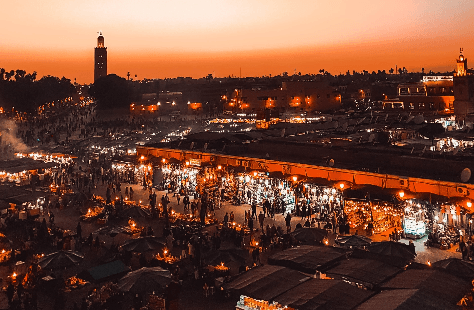
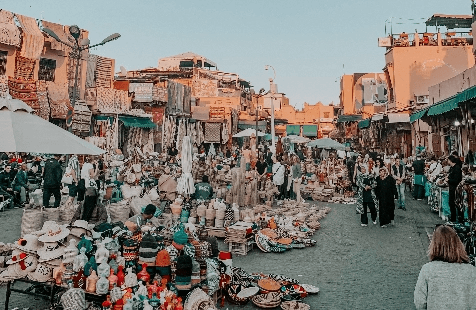
Demographic trends
Morocco’s population is growing at a slightly faster rate than that of countries outside Africa, but it is well below the average for those in the Middle East and North Africa. Nonetheless, Morocco has a large population for its size that is highly concentrated in the most habitable areas. About one-fourth of the population is under age 15. For some time the opportunity to emigrate to western European countries offered a partial solution to Morocco’s population pressure, and by the early 1980s some 600,000 Moroccan workers and merchants had established themselves in western Europe. Morocco’s population problem was only marginally relieved by migration to the labour markets in the Persian Gulf region during the oil boom that began in the late 20th century.

Touristic Cities
Marrakesh - The Red City
Between tradition and modernity, Marrakech is the promise of unequalled sensations. Strolling the Jemaa El-Fna square and the souks with their shimmering colours and oriental smells, the red city offers you a complete change of scenery. Horse-drawn carriage rides, sunny terraces, travelling artists and other day and night activities will give a tates of wishful comeback. You will be able to admire all the architectural richness of the Medina, upon visiting one of its many riads, small oriental palaces overlooking a beautiful patio. You can also relax and recharge at the Menara, a vast garden with an emblematic basin. Marrakech shower its visitors by its splendour and its diversity, you just have to leave the ramparts to be immersed in modern Morocco. The districts of Gueliz and Hivernage offer the most modern infrastructures, luxury boutiques and international ready-to-wear stores, airy avenues ; which all contribute to Marrakech's unique offering. Being a growing economic bustling city, Marrakech has special festive and cultural places, such as the « Palais des Congres » and the splendid Royal Theater. Enjoy Marrakech at night by discovering the many themed venues, trendy clubs and traditional evenings that reflect the lively part of the city.




Jamâa El-Fna Square
Jemaa El Fna Square is undoubtedly the international symbol of Marrakech and, more broadly, of Morocco. But behind this postcard figure, where millions of tourists meet every year, where a colourful crowd buzzes day and night, there is the magic of Marrakech, this crossroads where the world meets, this place where nomadic humanity takes the time to stop its frantic race to share a moment, to fill its bag or to sell its contents.
Majorelle Garden
The Jardin Majorelle, which extends over 9,000 m², is one of the most enchanting and mysterious gardens in Morocco. Created over the course of forty years, it is enclosed by outer walls, and consists of a labyrinth of crisscrossing alleyways on different levels and boldly-coloured buildings that blend both Art Deco and Moorish influences. The French painter Jacques Majorelle conceived of this large and luxuriant garden as a sanctuary and botanical ‘laboratory’. In 1922, he began planting it with exotic botanical specimens from the far corners of the world. In 1980, Yves Saint Laurent and Pierre Bergé, who first arrived in Morocco in 1966, purchased the Jardin Majorelle to save it from destruction at the hands of hotel developers. The new owners decided to live in Jacques Majorelle’s villa, which they renamed the Villa Oasis. For many years, the Jardin Majorelle has provided me with an endless source of inspiration, and I have often dreamt of its unique colours." Yves Saint Laurent
El Badîi Palace
El Badi Palace or Badi' Palace is a ruined palace located in Marrakesh, Morocco. It was commissioned by the sultan Ahmad al-Mansur of the Saadian dynasty a few months after his accession in 1578, with construction and embellishment continuing throughout most of his reign.
Tangier, The Cosmopolitan City
In the north of Morocco, on the coasts of Tangier where the Mediterranean and Atlantic waters converge, you’ll discover a unique city bearing a multicultural heritage. Stroll the streets of « the White »Tangier, they are lined with lime-coated houses. Just like Delacroix or Matisse did their upon arrival, let yourself be carried away by the dreamy atmosphere that covers the city. At the foot of the high walls of the "Kasbah", roam through the alleys of the great "Socco", and admire the fortress that dominates the medina. A little far away, explore the "Sultan's Palace" which is nowaydays dedicated to the arts of Morocco. Tangier is alsos renowned for the Spanish influence on its culture, starting with the arena that stands on the "Plaza de Torros", not to mention the "Cervantes" theatre built in 1913.
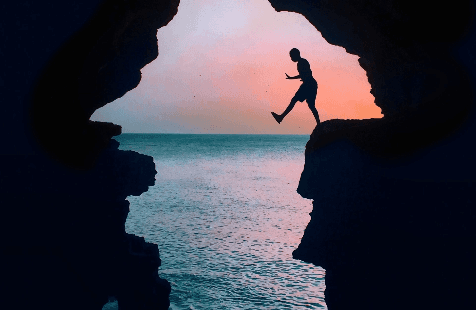
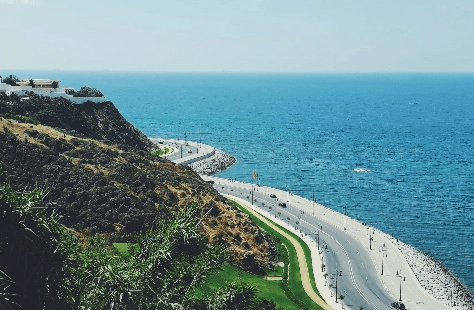
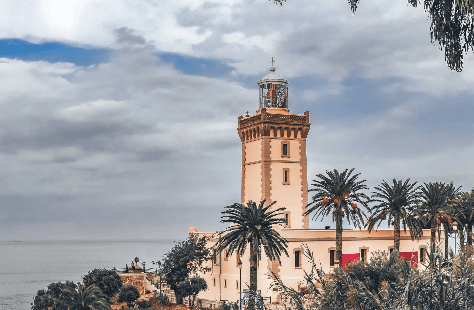
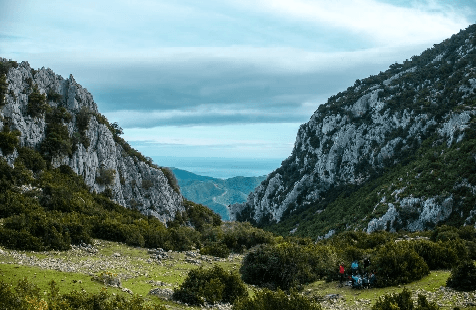
Cape Spartel Beach
Jemaa El Fna Square is undoubtedly the international symbol of Marrakech and, more broadly, of Morocco. But behind this postcard figure, where millions of tourists meet every year, where a colourful crowd buzzes day and night, there is the magic of Marrakech, this crossroads where the world meets, this place where nomadic humanity takes the time to stop its frantic race to share a moment, to fill its bag or to sell its contents.
The Caves of Hercules
The Caves of Hercules is an archaeological cave complex located in Cape Spartel, Morocco. Situated 14 kilometres west of Tangier, the popular tourist attraction is adjacent to the summer palace of the King of Morocco. The cave has two openings, one to sea and one to land.
Accomodation
Guest houses
In the medinas or surrounded by the beauty of nature, you’ll experience well-being and a unique hospitality in the guest houses. Get immersed the magnetic atmosphere during your stay, and get to know the Moroccan culture and traditions. The city boast not only price tags, but also traditional culture of its inhabitants.
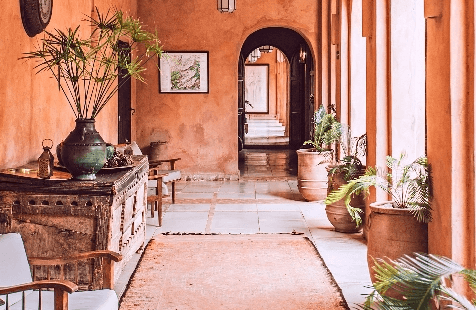
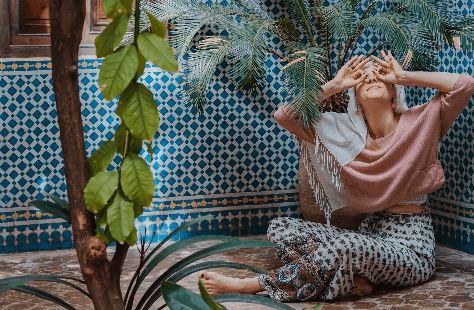
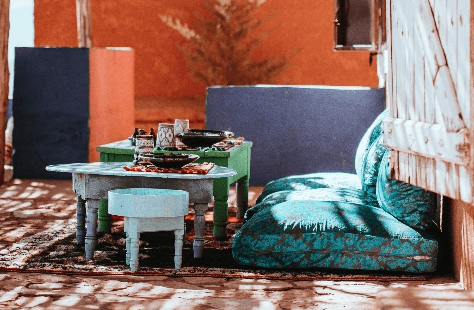
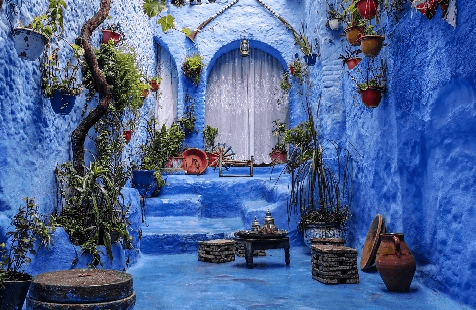
Hotels and resorts
Hotels have multiplied in the main cities in the past few years, including world-renowned hotel chains. The Mamounia was named, according to the ranking of the largest luxury travel and lifestyle magazine "Conde Nast Traveler », the best hotel in the world and in Africa in 2018, then the 2nd best hotel in Africa after Le Royal Mansour which was ranked first by the same magazine in its category "Readers' Choice Award Winners 2019".
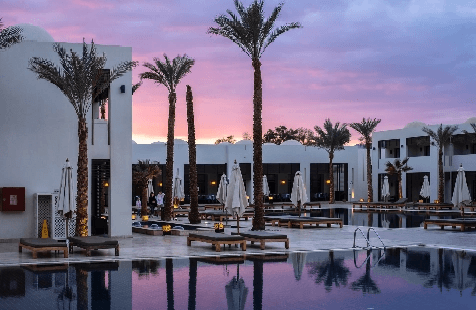
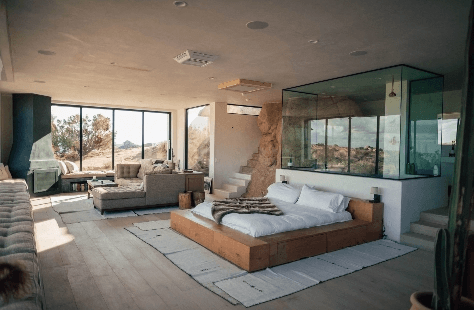
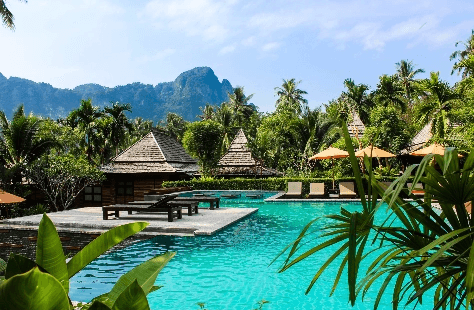
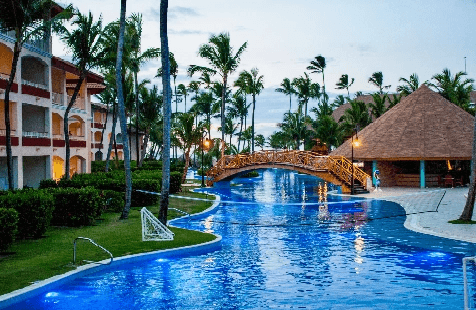
Riads
The Riad, the epitome of Moroccan hospitality. It gives you an immersive experience in a long-standing cultural tradition that combines between comfort, luxury, weelbeing, and service quality. Make the most of your stay in one of top-rated Riads that offer you beautiful gaze at its stunning inner garden.
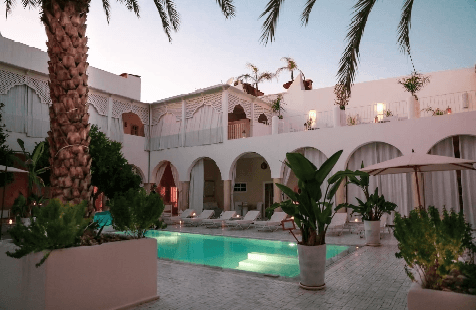
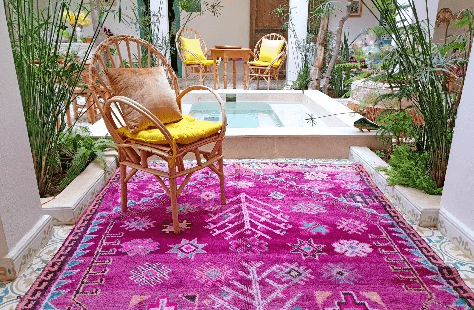
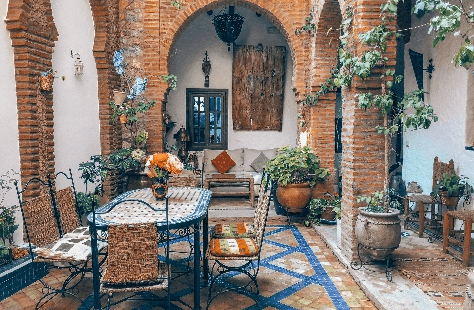
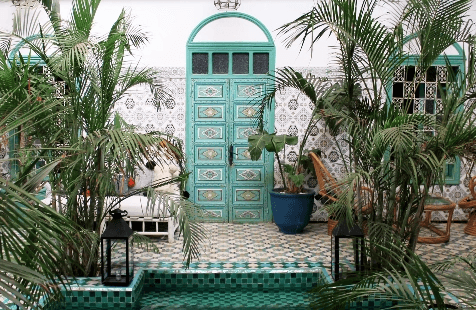
Campings
If you leave the hustle and bustle of the city to experience a stay in a remote area at your own pace, the campsites are tailor made for you! From luxurious campsites in the middle of the desert to sports campsites in the beautiful, wild and quiet beaches, clearings and undergrowth, there are 90 campsites scattered around Morocco to host you !
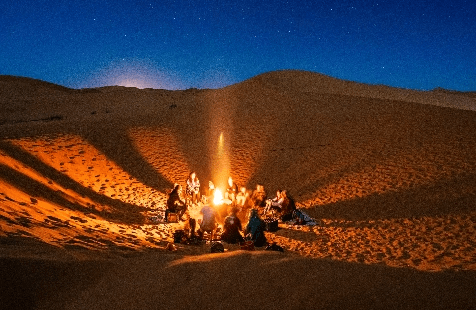
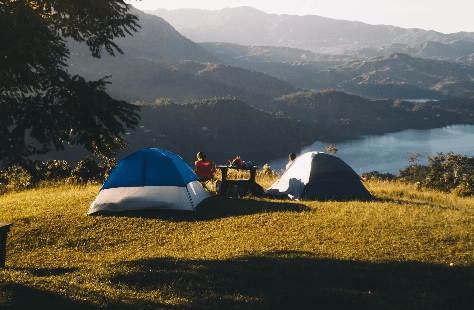

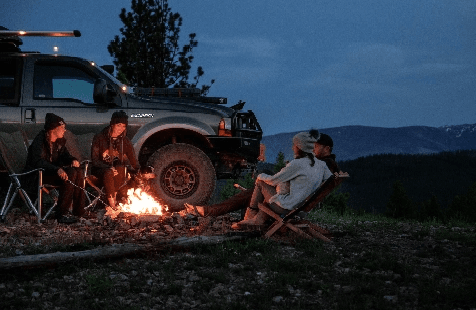
Requirements for Visa
Documents to be submitted for your application
- Entry visa application form into the Kingdom of Morocco;
- Two identity photographs in colour on white background (4 X 3 cm) showing the features of the face clearly;
- Identity card or residence permit or any document that proves the address;
- Valid passport: The validity of the passport or the travel document must be longer than the duration of stay;
- A photocopy of the passport (pages indicating the identity & the validity);
- Bank statement;
- Or attestation of invitation duly legalized, in case of family visit, including guarantee of covering medical and possible repatriation expenses
- Or request from an authorized travel agency or recommendation of the Ministry of Tourism or the representation of the Moroccan National Tourist Office.
At the time of visa issuance, please provide the following documents
- A return ticket with confirmed reservation;
- Travel Insurance;
- A hotel booking, or Introduction of a “Voucher”;
- Chancery fees.
Useful links
- Types of granted visas
- Ordinary visas
- Countries whose citizens are exempted from entry visa into Morocco
- Countries with agreements signed by Morocco for the abolition of visas for official
passports
- Consular services
Economy of Morocco
Agriculture, forestry, and fishing
Morocco is endowed with numerous exploitable resources. With approximately 33,000 square miles (85,000 square km) of arable land (one-seventh of which can be irrigated) and its generally temperate Mediterranean climate, Morocco’s agricultural potential is matched by few other Arab or African countries. It is one of the few Arab countries that has the potential to achieve self-sufficiency in food production. In a normal year Morocco produces two-thirds of the grains (chiefly wheat, barley, and corn [maize]) needed for domestic consumption. The country exports citrus fruits and early vegetables to the European market; its wine industry is developed, and production of commercial crops (cotton, sugarcane, sugar beets, and sunflowers) is expanding. Newer crops such as tea, tobacco, and soybeans have passed the experimental stage, the fertile Gharb plain being favourable for their cultivation. The country is actively developing its irrigation potential that ultimately will irrigate more than 2.5 million acres (1 million hectares). Nevertheless, the danger of drought is ever present. Especially at risk are the cereal-growing lowlands, which are subject to considerable variation in annual precipitation. On average, drought occurs in Morocco every third year, creating a volatility in agricultural production that is the main constraint on expansion in the sector. Livestock raising, particularly sheep and cattle, is widespread. Morocco fills its own meat requirements and is also attempting to become self-sufficient in dairy products.
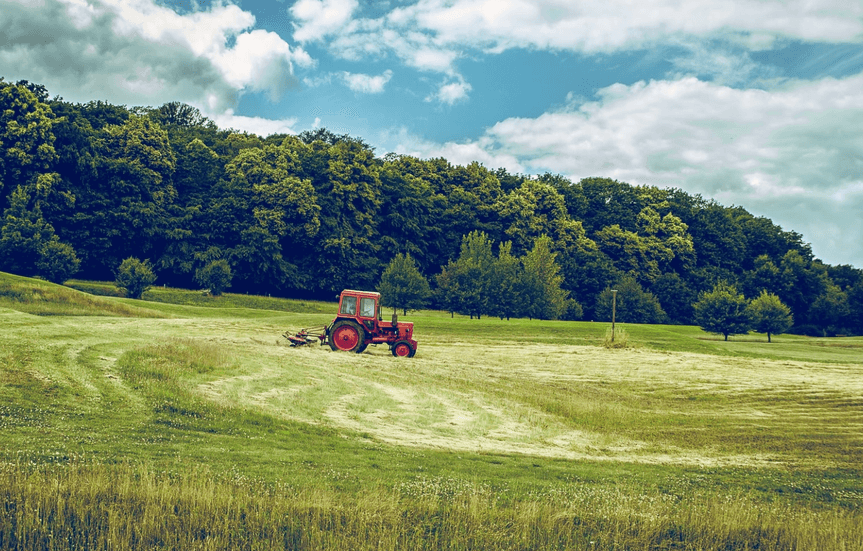
Resources and power
With its acquisition of Western Sahara, Morocco came to possess some two-thirds of the world’s reserves of phosphates, used for the manufacture of fertilizers and other products. Low world prices for phosphates, however, have hindered production. Other minerals include iron ore and coal, mined for Morocco’s domestic use, and barite, manganese, lead, and zinc, which are exported in small quantities. A major weakness in Morocco’s resource inventory is its shortage of domestic energy sources. Oil exploration has been disappointing, although the country possesses some natural gas reserves that have been exploited. Its hydroelectric potential is considerable and now being tapped. Morocco must cover the bulk of its growing energy needs through imports, principally crude petroleum, which is refined domestically. Thermal power plants produce much of the country’s electricity.
Manufacturing
Manufacturing accounts for about one-sixth of GDP and is steadily growing in importance in the economy. Two particularly important components of the country’s industrial makeup are processing raw materials for export and manufacturing consumer goods for the domestic market. Many operations date to the colonial period. Until the early 1980s, government involvement was dominant and the major focus was on import substitution. Since then the emphasis has shifted to privatizing state operations and attracting new private investment, including foreign sources. Processing phosphate ore into fertilizers and phosphoric acid for export is a major economic activity. Food processing for export (canning fish, fresh vegetables, and fruit) as well as for domestic needs (flour milling and sugar refining) is also important, and the manufacture of textiles and clothes using domestically produced cotton and wool is a major source of foreign exchange. Morocco’s iron and steel manufacturing industry is small but provides a significant share of the country’s domestic needs.

Finance
Morocco’s central bank, the Bank al-Maghrib, plays a preeminent role in the country’s banking system. It issues the Moroccan dirham, maintains Morocco’s foreign currency reserves, controls the credit supply, oversees the government’s specialized lending organizations, and regulates the commercial banking industry. Privatization has stimulated activity on the Casablanca Stock Exchange (Bourse de Casablanca—founded in 1929—is one of the oldest exchanges in Africa), notably trade in shares of large former state-owned operations.

Trade
Government attempts to increase exports and control imports have had some success, and a chronic annual trade deficit has begun to narrow. By the 1990s Morocco had also significantly lowered its foreign debt. The three leading exports are agricultural produce (citrus fruits and market vegetables), semiprocessed goods and consumer goods (including textiles), and phosphates and phosphate products. Major imports are semimanufactures and industrial equipment, crude oil, and food commodities. Morocco’s largest trading partner is the EU. Because Morocco’s trade with Europe has been so significant, an important development of the 1990s was negotiating a formal association with the EU, including an agreement to create, over time, a Euro-Mediterranean free trade zone. Other trade accords have also been negotiated to mitigate the dependence on Europe, including an agreement with North American Free Trade Agreement countries and bilateral arrangements with other countries in the Middle East and North Africa. In 2004 a Free Trade Agreement was signed with the United States.

Labour and taxation
Roughly one-third of the population is employed in agriculture, another one-third make their living in mining, manufacturing, and construction, and the remainder are occupied in the trade, finance, and service sectors. Not included in these estimates is a large informal economy of street vendors, domestic workers, and other underemployed and poorly paid individuals. High unemployment is a problem; the official figure is roughly one-fifth of the workforce, but unofficial estimates are much higher, and—in a pattern typical of most Middle Eastern and North African countries—unemployment among university graduates holding nontechnical degrees is especially high. Several trade unions exist in the country; the largest of these, with nearly 700,000 members, is L’Union Marocaine du Travail, which is affiliated with the International Confederation of Free Trade Unions. Tax revenues provide the largest part of the general budget. Taxes are levied on individuals, corporations, goods and services, and tobacco and petroleum products.

Transportation and telecommunications
Morocco’s road network effectively integrates the country’s diverse regions. Established during the colonial period, the network has been well maintained and gradually expanded since. The railway system connects the principal urban centres of the north, and new rail links, together with improved roads, are being established to El-Aaiún (Laâyoune) in Western Sahara. Morocco has some two dozen ports along its lengthy coastline. Casablanca alone accounts for about half of all port tonnage handled, although port facilities in Tangier are of increasing significance. Other major ports include Safi, Mohammedia, Agadir, Nador, Kenitra, and El Jorf Lasfar. About a dozen airports capable of accommodating large aircraft service the country; the principal international airport is located near Casablanca. The state-owned Royal Air Maroc (RAM) airline provides regular service to Europe, North America, the Middle East, and western Africa. In the late 1980s and early ’90s the government undertook a major expansion and modernization of the telecommunications system. This nearly quadrupled the number of internal telephone lines and greatly improved international communications. In 1996 the state-owned telecommunications industry was opened up to privatization by a new law that allowed private investment in the retail sector, while the state retained control of fixed assets. In 1998 the government created Maroc Telecom (Ittiṣālāt al-Maghrib), which provides telephone, cellular, and Internet service for the country. Satellite dishes are found on the roofs of houses in even the poorest neighbourhoods, suggesting that Moroccans at every social and economic level have access to the global telecommunications network. The Internet has made steady inroads in Morocco; major institutions have direct access to it, while private individuals can connect via telecommunications “boutiques,” a version of the cyber cafés found in many Western countries, and through home computers.
Latest News in Morocco
Politics
The first president of independent Namibia, Sam Nujoma, has died at the age of 95 in the capital Windhoek, the country's current leader has announced.
Politics
Ugandan President Yoweri Museveni has officially announced his intention to seek re-election in the 2026 presidential race, extending his nearly four-decade rule. Museveni, who has been in power since 1986, is once again positioning himself as the steady hand guiding Uganda through challenges. His decision has sparked mixed reactions, with supporters praising his leadership and longevity, while critics call for fresh leadership and political reform. As the nation looks ahead to the 2026 elections, Uganda braces for a heated political contest.
Politics
Peace Agreement with DRC Rwanda and the Democratic Republic of Congo (DRC) signed a U.S.-brokered peace deal aimed at ending conflict and promoting regional trade. Rwanda agreed to stop supporting armed groups like M23 rebels, though it denies involvement. Tensions remain, and President Kagame is cautious about whether the peace will last.
Wildlife
Tanzania has announced that all foreign tourists visiting Mainland Tanzania will be required to purchase a mandatory travel insurance policy upon arrival, beginning January 2026. The new regulation, issued by the Ministry of Finance on July 4, 2025, is part of the government reforms in the country’s 2025/26 financial year agenda. According to the notice, the measure will apply to all non-citizens, with the exception of visitors from countries that are part of the East African Community (EAC) and the Southern African Development Community (SADC). Citizens from these regions will continue to be exempt from the requirement.
Environment
In light of the growing food insecurity crisis across many African nations, heads of state and agriculture experts gathered in Nairobi, Kenya, this week to discuss solutions to address food shortages, especially in regions severely affected by climate change, political instability, and economic challenges. The two-day summit, titled “Agriculture and Climate Resilience: A Pan-African Strategy”, brought together government officials, NGOs, scientists, and international organizations to create a comprehensive strategy to improve agriculture, nutrition, and sustainable food systems across the continent.
Tech & Science
In 2025, Artificial Intelligence (AI) isn’t just a futuristic buzzword - it’s the secret weapon behind some of the world’s most successful content creators. From bloggers and YouTubers to podcasters and marketers, AI-powered tools are changing the way we brainstorm, write, design, and edit. If you've ever struggled with writer’s block, lacked design skills, or wished for faster content creation - AI might be your best assistant yet. Here’s how AI is revolutionizing the creative industry and how you can use it to boost your projects.
